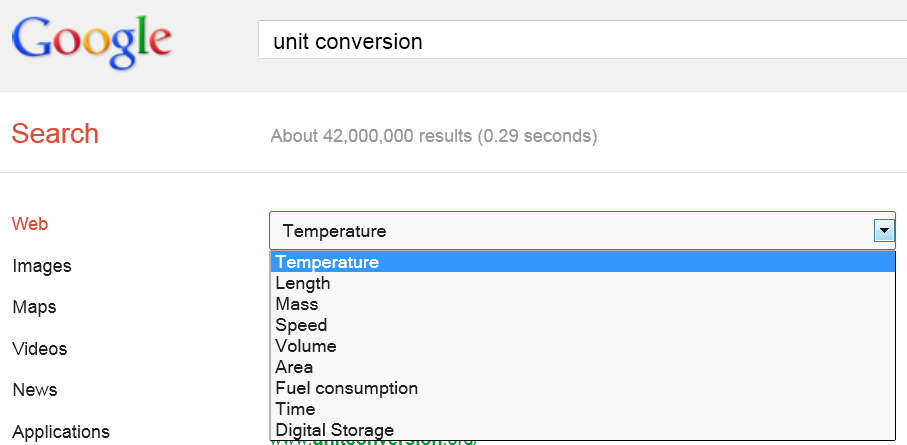What Does Inches To Centimenter Do?
Wiki Article
Inches To Centimenter Fundamentals Explained
Table of ContentsThe Of Inches To CentimenterThe Facts About Inches To Centimenter RevealedRumored Buzz on Inches To CentimenterHow Inches To Centimenter can Save You Time, Stress, and Money.Getting My Inches To Centimenter To Work
This treatment for figuring out the needed conversion element corresponds specifically to Jeremy's hands-on method: "To determine a device conversion aspect, set the criterion value to 1 in the interface, after that identify the worth returned by the API; this will give you the precise conversion element in between the two." Better, we can really have Revit convert that worth to a very various set of systems of measure.That conversion is done making use of the As, Value, String technique. If you explore the sample code you will possibly gain some even more understandings into exactly how Revit jobs with parameters as well as devices of action.
To convert between systems, you're normally offered one action and also asked to transform to another measure. For instance, you'll be provided some volume in "gallons" as well as be asked to convert the volume to "fluid ounces". They will have provided you (or else you can easily find) the conversion units that are appropriate to the job.
To transform from one device to one more, right here's the actually easy rule: going to smaller devices meansgoing to larger numbers, so increase mosting likely to bigger systems meansgoing to smaller numbers, so divide Quarts are smaller than gallons; every gallon has 4 quarts. Given that I'm transforming from a bigger system (gallons) to a smaller unit (quarts), my answer requires to be a larger number.
The Best Strategy To Use For Inches To Centimenter
Given that I'm converting from a smaller sized unit (lawns) to a larger system (miles), my response needs to be a smaller sized number.!! The above are examples of one-step conversions in between units of the exact same kind; namely, Imperial systems.
Note: I'm not speaking below concerning numbers "negating", like when you're multiplying fractions. Rather, I'm chatting about treating the systems (" feet", "cubic centimeters", "secs", and so on) as though they were numbers, and also terminating them. inches to centimenter. Among these dimensions remains in terms of "miles per hour" and the other is in terms of "meters per second".
These factors provide links, one means or an additional, in between "secs" and also "hrs" and also in between "miles" as well as "meters", so they'll obtain the work done. To contrast these two prices of rate, I need them to be in the exact same systems. Flipping a coin, I choose that I'll convert the "80 miles per hour" to "meters per second".
Inches To Centimenter Can Be Fun For Everyone
I want "hrs" to cancel off (for "secs", ultimately), so the conversion factor for hrs and mins needed to have "hours" ahead. That implied that "60 minutes" needed to be underneath. And also that dictated the alignment of the next factor: Given that "60 mins" was below as well as since I would certainly need "mins" to cancel at some factor, then the "1 over at this website minutes" (from the conversion factor for mins and seconds) needed to be on top.And also because I'm desiring a final solution of "per seconds", I want the secs beneath, so this functions out ideal. Similarly, what they provided me has "miles" ahead so, in the "1 mile to 5280 feet" conversion element, I require the "miles" on the bottom, so it terminates off.
So, in the "1 foot to 12 inches" conversion aspect, I'll need the "foot" on the bottom; this will certainly place the "inches" on the top. Then the "1 inch to 2 - inches to centimenter. 54 centimeters" conversion element will certainly require the "inch" under, leaving the "centimeters" on the top. The last conversion variable is "100 centimeters to 1 meter"; since "centimeters" in the previous element got on top, after that I'll need "centimeters" under, leaving the "meters" on the top.
Forty is greater than thirty-six, so: 40 meters per second is much faster than 80 miles per hour. Affiliate This approach of transforming units can really be rather beneficial: it obtained me through a chemistry class! I didn't have a clue what the trainer was speaking around, however on the examination questions he gave only the exact information needed, as well as if I established whatever so the systems terminated, I always got the best response.
The 6-Minute Rule for Inches To Centimenter
Cancelling systems (likewise known as "device evaluation" or "dimensional analysis") is based upon the principal that increasing something by "1" doesn't change the worth, that any type of value separated by the very same value equals "1", which (for the functions of converting in between systems) a conversion factor (shared as a fraction, as shown over) is considered as having a value of "1".Many of our individuals have actually written to us to tell us that Uconeer is the ideal engineering system conversion calculator they have actually ever utilized. Uconeer was made for engineering, technical and also scientific individuals that require frequent, precise, trusted and constant conversions of the sensible systems and site also measurements that these details they utilize on a day-to-day basis.
If you are this kind of user then we are positive that Uconeer will certainly be the very best for you.

Inches To Centimenter Fundamentals Explained
That is why we require a system converter to help is in calculations - inches to centimenter. A device is the action of amount to provide value to issue.Report this wiki page